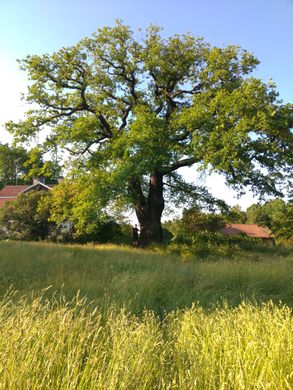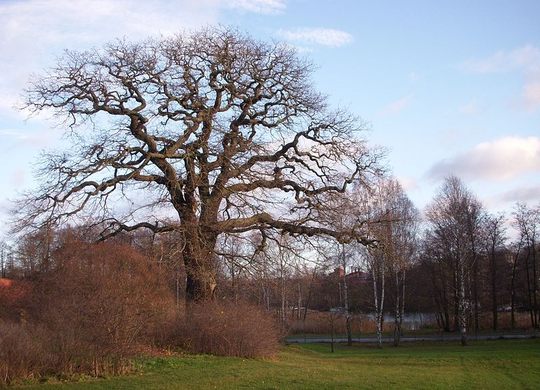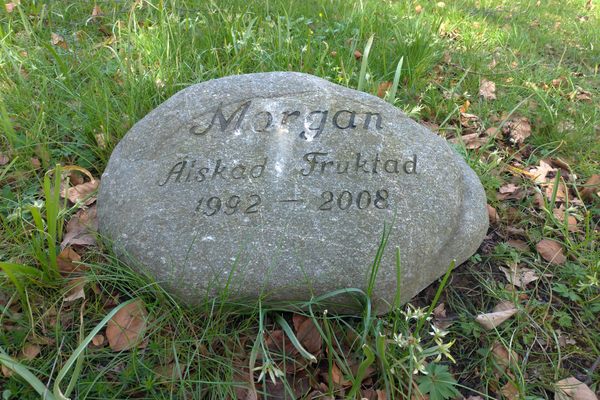Lyells Ek (Lyell's Oak)
This tree was once used to calculate the decrease of the Baltic Sea.
On the outskirts of Stockholm, there is an ancient oak tree that has been used to measure changes in sea level.
During the last Ice Age, a layer of ice more than three kilometers thick covered the Nordic countries and Canada. All of this mass compressed the earths mantle, lowering the land by several meters. After the ice melted, the mantle started to puff back up slowly—very very slowly. Only by about half a centimeter a year, a negligible amount, but very noticeable over the course of a decades. Today, we understand this process relatively well. But in the 19th century, one of the the prevailing theories was that the Baltic Sea was shrinking.
Charles Lyell, a Scottish geologist, was one of the prime researchers in this field. Lyell was fascinated by the retreat of water that could be found in Stockholm. A prime example was King Carl XI’s fishing cabin, which was located near the water when it was built in 1680 and is now located roughly 150 meters inland (a water decrease of about 2 meters). Lyell was skeptical of this massive decrease and investigated the area in 1835. He found an old oak tree half way between the shed and the water, and even the ruins of a shed that dated back to Carl XI.
He drew a profile of the area, which was submitted as proof that the decrease is less than was then believed. Several years later in 1840, the current theory of land rise was proposed, which fit much better with Lyell’s observations. The tree from the profile drawing was named “Lyell’s Oak’” in later publications.
Today the oak is listed as a natural monument and preserved as a prime example of the scientific method.
Know Before You Go
The oak is easy to find, as it is the biggest tree in the area.
Plan Your Trip
The Atlas Obscura Podcast is Back!




















Follow us on Twitter to get the latest on the world's hidden wonders.
Like us on Facebook to get the latest on the world's hidden wonders.
Follow us on Twitter Like us on Facebook